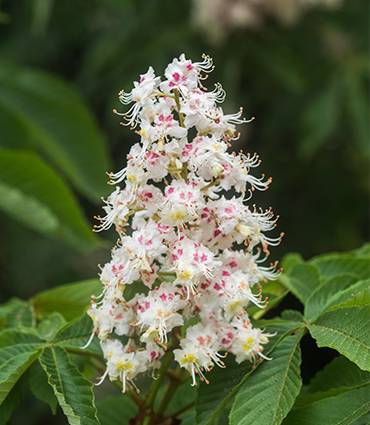Horse-chestnut

Latin name :
Aesculus hippocastanum Gray
Common Name :
Horse-chestnut
Family :
Sapindaceae
Origin :
Europe, North America
Part of the plant used :
Seed
Description
The horse chestnut tree, Aesculus hippocastanum, is a tree native to Asia Minor, which produces inedible chestnuts. It should not be confused with the common chestnut tree, which produces chestnuts that can be roasted by the fire: hot chestnuts. Apart from the fact that the two are similar, this confusion is due to the fact that in everyday language, a chestnut is actually a large chestnut, which is the product of human cultivation. To tell the difference, if you come across one in the wild, think of a chestnut as being round and a chestnut as having a flat face.
The chestnut corresponding to the seed of the horse chestnut tree is used in phytotherapy. It consists of saponosides, coumarins (esculin, fraxoside) and tannins (proanthocyanidols, esculitanins). Coumarins are venotonic, vasculo-protective and anti-oedematous molecules. The tannins have a protective effect on the small blood vessels.
Horse chestnut is traditionally used in cases of heavy legs, oedema, capillary fragility, haemorrhoids and venous circulatory problems (venous insufficiency). In addition, the seed of this plant is anti-inflammatory, antioxidant and anti-infectious, thanks to its tannins. Horse chestnut is indicated in case of congestion of the pelvis (varicose veins, prostatitis).
The benefits
Horse chestnut is a natural antioxidant, traditionally used for good blood circulation in the micro-vessels, especially in the lower limbs and in case of haemorrhoids. It also reduces the sensation of heavy legs.
Scientific publications
Horse-chestnut is the object of more than 402 scientific publications.

























